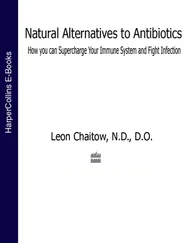Among the most revealing of all were the findings when Dr Jessop investigated the symptoms experienced before their conditions became chronic: irritable bowel symptoms (89 per cent); recurrent childhood ear, nose and throat infections (89 per cent); ‘constant gas’ or bloating (80 per cent); endometriosis (65 per cent); constipation (58 per cent); heartburn (40 per cent); recurrent sinusitis (40 per cent); and recurrent bronchitis (30 per cent).
Most of the infections (ear, nose, throat, sinus, bronchitis, endometriosis) were almost certainly treated with course after course of antibiotics – the significance of which to the ‘yeast connection’ and digestive distress will become clear in later chapters.
Do you have a Candida problem?
Over the past few years, the following cluster of signs, symptoms and medical history indicators has been described by many practitioners as being present in people with chronic Candida problems.
1 The presence for at least two months of at least two digestive symptoms bad enough to cause you to change your diet or take medication such as:
• constipation and/or diarrhoea
• bloating
• indigestion
• heartburn/reflux
• food sensitivities or allergies.
2 Constant or periodic feelings of profound (‘unnatural’) fatigue, and difficulty in concentrating (‘brain fog’) that is severe enough to affect the way you function.
3 One or more of the following: a sense of hopelessness, anxiety, unnatural irritability, acne, migraine, widespread muscular pain, cystitis, vaginitis, thrush, menstrual problems, premenstrual tension.
4 A history of antibiotic use in excess of two courses in any one year before the development of symptoms (or the use of steroid medication or immune-suppressing drugs for a lengthy period of time (weeks rather than days).
For Candida overgrowth to be considered as the main causative feature of these symptoms, other medical conditions need to be ruled out as causes (although Candida overgrowth may coexist with any of these), such as:
inflammatory bowel disease (colitis, for example)
parasitic infection, such as Giardia
bacterial overgrowth in the intestines
hypothyroidism
hypoadrenalism (Addison’s disease).
Why does yeast spread?
To understand the way in which such a wide range of symptoms could result from the effects of a yeast that lives in all of us, we need to first appreciate those factors which encourage yeast to spread.
In most people, there is an uneasy ‘truce’ or balance between the body and the yeasts that live inside it. Over many thousands of years, a balance has been struck, allowing yeast to live and thrive while presenting no problems to its host, the body, as long as the yeast confines itself to specific areas. Should it grow beyond these sites, the defence capability of the body – represented by the immune system in general and white blood cells in particular – will attack and destroy these overgrowing yeast. The mucous lining of the digestive tract, when it is healthy, provides a physical barrier to prevent the spread of yeast and waste products through it. This mucous membrane also contains and secretes protective substances that can destroy invading yeast.
An added defence comes from the ‘friendly bacteria’ living inside us (mainly in the digestive tract). We give these friendly bugs somewhere to live (as well as food) in return for which they provide us with various services, one of which is control of undesirable visitors, such as yeast. (These defences are covered later in this book, in our search for an understanding of candidiasis.)
At this stage, we should simply recognize that when it is healthy , the body possesses a number of efficient defence capabilities to deal with toxins, undesirable bacteria and yeasts, should any of them intrude into areas where they might cause problems.
But when, due to any of a number of possible causes (discussed later), our defences against Candida is deficient or weakened, the yeast has a chance to spread to areas normally out of bounds. If, at the same time, the foods that the yeast thrives on (such as sugar) happen to be in plentiful supply, an explosion of Candida activity can occur.
This situation – weakened defences and nourishment for Candida – is precisely the combination of factors that has been identified as having become widespread in Western society over the past 25 to 30 years.
The introduction of broad-spectrum antibiotics, the contraceptive pill and the widespread use of steroid medication (such as cortisone) have all played their part in Candida’s spread. In addition, the increased use of sugar and sugar-rich foods has provided the yeast with just the sustenance it loves. This is the unfortunate combination of factors lying at the root of the problem for many people.
A careful look at the nature of the enemy is necessary, together with consideration of those factors and circumstances which allow it to multiply, and what the consequences of such a proliferation might be. This will allow us to consider methods of controlling Candida, the brighter side of our sorry situation, for it seems unlikely that the causative elements of the ‘yeast explosion’ are going to go away. The fact that control is possible in the majority of cases is the good news.
Yeast is not always the cause
It is important to understand that the conditions listed above (such as irritable bowel, bloating, fatigue) are not always the result of Candida infection. However, it is true that all of these can be partly or entirely a result of candidiasis. It is the view of those practitioners now aware of the possibility of Candida’s involvement in common disease problems of this sort that, when a combination of such symptoms appears in a person with no other obvious causes apparent, then Candida should be considered a prime suspect.
Unlike many infections and infestations, it is not easy (but not impossible) to test accurately for the presence of Candida. This is because, as already stated, Candida is present to some extent in all of us, which makes looking for it as pointless as searching for mice in a granary – it is always there. But to what extent, and how much is it involved in producing the symptoms?
Testing for Candida
Candida albicans (and other yeasts) are so common in stool cultures that their presence is often ignored by microbiologists. Medical researchers have highlighted the difficulty of assessing purely from tests whether Candida is active, even when it is known to be in an advanced stage of overgrowth. 3So what tests appear to be the most helpful – as none are perfect – in assessing the presence or absence of yeast overgrowth?
1 Culturing stool samples can be helpful in identifying specific strains of yeast as well as their quantities, but this is not a foolproof method since assessment depends on the particular sample submitted for analysis and, sometimes, people with known Candida overgrowth can produce stools containing relatively low levels of yeast. Faecal culturing has been shown to give 25 per cent false-negative results – that is, people with known yeast overgrowth can wrongly (in one in four negative tests) be assumed to be clear of the organism. And, since everyone has some yeast in the intestines, a positive test does not necessarily tell you that it is the cause of the symptoms being experienced. Nevertheless, these tests can be useful because, when they find high levels of Candida (or other yeasts), they can identify particular strains and also test these to see what medications (drugs and herbs) they are sensitive to. An additional advantage of the stool analysis is that it can identify the presence of parasites and pathogenic bacteria which might be causing or aggravating symptoms.
Читать дальше












